Please note that this post may contain affiliate links and sales through those links may reward Bigger Better Days with a small commission at no extra cost to you.
The macro diet is an effective new diet gaining popularity, and major results.
Macro counting takes calorie counting one step further. Instead of counting general calories, you’re counting macronutrients. Specifically, you’re tracking proteins, carbs, and fats.
The macro diet allows for complete customization for individuals, and gives a better level of specificity based on your goals.
Better yet, this diet focuses on actual nutrition versus the amount of food you’re putting in your mouth.
Macro counting is the perfect diet solution when you’re looking for serious results but want to make smarter diet choices too. This new diet is so popular, it even has a hashtag. Check out #IIFYM (If It Fits Your Macros) to see the proof yourself.
We’re breaking down everything you need to know about the macro diet below. Get started, get healthy, and live a bigger, better life.
PS. There are a few things you’ll need to win at macro dieting. We’ve got you covered with this complete list.
[convertkit form=1006181]
What is the Macro Diet?
The macro diet focuses on macronutrients: carbohydrates, protein, and fat. Macronutrients are the three types of nutrients that fuel your body with the most nutrients.
Your body also uses micronutrients, which are other nutrients your body uses in smaller amounts.
Foods typically have 2-3 macronutrients but are labeled as the one based on which category is most present. For example, chicken is a protein but it also has fat.
When we break down each macro we can see that they all provide unique and important functions.
Believe it or not, there are a ton of misconceptions about the macro diet. To help make things clear, we’ve got the top 6 macrobiotic diet myths explained.
Macronutrient Breakdown
Proteins

When we think of protein we typically think of meat. While meats are a large part of what proteins are, there are also other options like eggs, tofu, fish, and lentils too.
Proteins do some pretty cool stuff in our body. They are critical for processes like immune function, building tissues, hormones, and enzymes, and also things like cell signaling.
Proteins provide about 4 calories per gram.
Carbohydrates

We all know (and usually love) carbs. When we eat carbs they are broken down into glucose. Glucose is either used for an immediate source of energy, or it’s stored as glycogen in your liver and muscles.
Carbs also provide about 4 calories per gram. Typically carbs are not a great choice for diets, and they are an often debated macronutrient.
The best advice we can give you is that when you see your recommended percentage of carbohydrate daily intake, don’t jump to stuff like pasta. The macro diet is definitely not recommending that you eat macaroni and cheese every day. And yes, we’re sure about that.
Instead, keep in mind that there are other healthier forms of carbs, like starchy veggies, beans, and fruits. See our full list of healthy carb options when you keep reading.
Fats

Fats usually get a bad rap, but they’re actually really important for your health.
Our bodies use fats for energy, hormone production, body temperature maintenance, and nutrient absorption among other things.
Fats provide about 9 calories per gram.
And again, to clarify, no one is asking you to binge eat some really unhealthy stuff. Healthy fats come in the form of avocado, nuts, butter and some meats and fatty fishes.
Why the Macro Diet Works
One of the best things about the macro diet is that it forces you to make better food choices. Instead of finding a low calorie snack that’s full of sugar, toxins and other crap, you have to eat foods that matter.
In the world of calories, an apple and a bag of chips could have the same amount of calories. Do you think a bag of chips is going to help you get healthier? Probably not. But an apple might.
See how the macro diet works?
Nutrient-dense food first, calories second.
It’s nearly impossible to binge on unhealthy food, because things like sugary bowls of cereal, or a bar of chocolate don’t have the right macronutrient makeup.
The macro diet helps you get healthier, but it can also help you reach the weight loss goals you’ve always dreamed of.
Another cool thing about the macro diet is that it’s not too restrictive. Because you can build your own macro ratio out of anything you want, as long as you’re hitting your macros, it’s actually pretty flexible.
A lot of macro lovers claim it’s the only diet they’ve actually be able to stick with long term.
The Macro Diet Puzzle
The only downside of the macro diet is that you may need to channel your favorite mathematician.
Filling your plate with a mixture of protein, carbs and fats seems pretty simple. But it gets a little complex when you need a particular ratio and each food item has multiple macros.
Calories are simple. You’re counting one number. Unfortunately aren’t as worthwhile as macros. So if you really want to do this health thing, go the little extra distance and go macro.
If the macro diet already sounds exhausting and you kind of hated high school math, think of it as a game instead. Get excited about finding the oh so perfect macro meal mix that’s perfect for you, and delicious.
Macro in Comparison
The macro diet takes bits and pieces of other popular diets you may have heard of.
It has similarities to the Paleo diet because it revolves around making smarter food choices. But it also has similarities to Weight Watchers because you’re tracking calories and staying within daily intake ranges.
The macro diet starts to differ because it’s not a blanket diet option. Your target macro ration is specific to you and your goals.
Your target macro ratio will differ entirely based on your current health situation, and where you’re trying to get. Whether you’re trying to lose weight, maintain your current sitch, or if you’re an athlete with specific goals, it’s adjustable.
The macro diet also takes into comparison the difference between men and women’s bodies. Women’s bodies typically require less caloric intake, and it’s believe that they need a smaller percentage of carbohydrates as well. The macro diet automatically adjusts for these differing needs by the calculation of your calorie and macronutrient needs, which is specific to each individual.
Before you get started with the macro diet, check out these 3 things you need to know.
Finding Your Ideal Macro Diet Ratio
Macro diet ratios are totally personalized. They depend on your age, size, and activity levels.
People who work out need different levels of proteins and carbs than someone who doesn’t exercise at all. We hope if you’re serious about getting healthy and leading a bigger life that you exercise at least a little bit, but hey, you gotta do you.
The macro diet is all about the ratio. You need proteins, fats and carbs, but how much of each?
Your first step is figuring out how many calories you should be eating in total.
Your Macro Diet Calorie Count
Knowing the right macro diet calorie count is just an important as knowing your macro ratio. Even if you know the percentage breakdowns of your macros, you could still be eating way too much, or way too little.
Your suggested daily calorie intake count is calculated based on your size, activity levels, age, and your health or weight loss goals. There are a lot of pieces at play here, so it’s easiest to use a calculator like the one at freedieting.com.
Simply input your age, gender, current weight, height and your exercise levels.
Then, the calorie calculator breaks down exactly how many calories you should consume based on your goals. It will deliver your ideal calorie count based on three different categories:
- Maintenance
- Fat Loss
- Extreme Fat Loss
Simply choose the option that meets your health goals and you’ve got a calorie count.
Next up you’ll need to figure out how to break down that calorie count into the right macro ratio.
Your Macro Diet Ratio
You need the right percentage of these three macronutrients to optimize your bodily functions, you’re healthy, and your weight loss goals.
Now that you’ve got your ideal calorie count you can either do some choose a standard macro ratio breakdown, do some serious math, or use another free calculator from freedieting.com.
We’re going to go ahead and recommend the free online macro diet calculator because duh, it’s easy.
It works similar to the calorie calculator.
Just enter your calorie count, and how many meals per day you plan on eating. You can also select from a list of common macro ratios too.
Click calculate and you’ve got your macro ratio!
If for some reason we can’t understand you’re against using an online calculator, you can also use these beginner standard ratios too:
- Exercise = 1 hour or less daily: 30% protein, 30% fat, 40% carbs
- Exercise = 1-2 hours daily: 30% protein, 25% fat, 45% carbs
Healthy Macro Diet Food Choices
Finding the right food and meal options can be the hardest part about starting a new diet.
It takes time to figure out which foods are your friends, and which ones you can eat over and over again without getting burned out.
We’ve put together a quick healthy macro diet food options to get you going on this awesome diet.
Proteins
Chicken, egg whites, turkey, lean red meat, salmon, mackerel, herring, cod, shellfish, protein powders, nuts, tofu, and lentils.
Carbs
Whole gains, leafy greens, broccoli, asparagus, cauliflower, squash, green beans, onions, cucumbers, oatmeal, sweet potatoes, potatoes, peas, grains (oats, brown rice, quinoa), fruits (berries, bananas, pineapple, apples), and some dairy products.
Fats
Avocado, egg yolks, nut butters, full-fat milk, full-fat yogurts, full-fat cheeses, flaxseeds, chia seeds, coconut oil, almonds, olive oil, almonds, brazil nuts, macadamia nuts, butter, meats, and fatty fishes (salmon and sardines).
Macro Diet Meal Planning

As with most diets it’s best to meal plan in the beginning. Meal planning helps you stay prepared and less likely to fall victim to temptations.
If you follow the typical macro diet plan you’ll need about 3 meals and two snacks per day. If you’re meal planning on a weekly basis that puts you at 21 meals and 14 snacks.
It may feel like snacking is actually adding more food into your diet, but eating healthy foods regularly keeps your blood sugar steady. It also prevents you from getting too hangry and cheating your plan.
Macro Diet Meal Planning Tips
These tips will make your meal planning experience a little easier:
- Shop and prep on the weekends. Plan out exactly what you’ll need for you macro diet meals and snacks. Get your shopping done and then prep everything you can in advance. When Monday morning rolls around you’ll be ready to roll.
- Buy in bulk. As you experiment with macro meals you’ll find favorites. Once you find something you’ll love, start buying in bulk. This will help you prep more at once and save money at the same time.
- Invest in a good storage system. You’ll be prepping a lot of food in advance, so you’ll need somewhere to store it. Get a set of food storage containers so you can keep all your hard prep work fresh. We like this set because they’re affordable, clear, and come in a variety of sizes so you can maximize fridge space.
- Get rid of temptations. Before you stock up on your perfectly portioned meals, go through the kitchen and dump anything that won’t help you stay on track. Whether it’s chips, chocolate, candy, desserts, it’s not going to help you reach your ideal health goals.
- Use a macro diet app. Let technology be your macro counting friend. There are several popular macro diet apps that make keeping track of your intake and ratios easy. We list out a few of our favorites below.
- Add some extra flavor. Eating the same healthy meals over and over can get boring. Incorporate fresh herbs and spices into your meal to mix things up and keep yourself interested. Getting burned out on your food choices is a sure way to fail at the macro diet.
The Best Macro Diet Apps
Calculating your personal macro diet choices might seem a little overwhelming. If you already feel like you’ve got a major headache but you really want to see macro results, consider using a macro friendly app to help you out.
We’ve compiled the top 10 macrobiotic diet apps you need. On a tight budget? Try these 5 totally free macrobiotic diet apps instead.
These are a few if the most popular apps that can help log your macros and keep track of your daily intake for you:
My Macros+
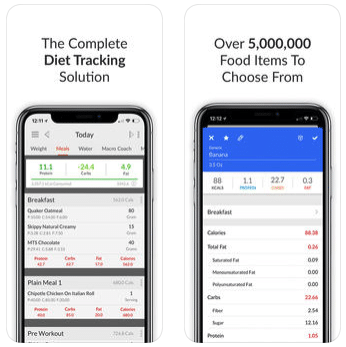
My Macros+ is one of the only apps dedicated solely to the macro diet. Other calorie counting apps have started included macro features, but it’s more of an afterthought. This app lets you specify your goals and it’s only $2.99 to download.
MyFitnessPal
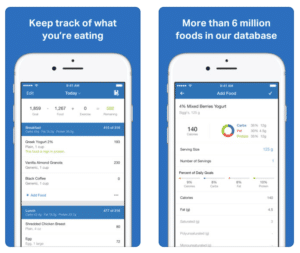
MyFitnessPal is one of the most popular food tracking and calorie counting apps there is. The app is free to download but macro dieters will need to purchase the premium edition use macro specific features.
MyPlate

The MyPlate app is a food tracker that’s free to download. Macro counters can see their breakdown in both grams and percentages without having to splurge on the upgraded version.
Lose It!
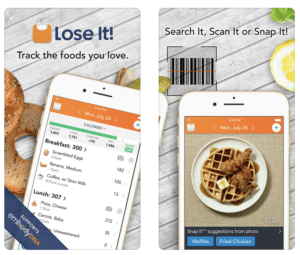
This calorie tracker has been around forever, and their premium subscription allows for macro counting with specific targets. They also have other cool features like a DNA testing option to integrate with your personalized insights.
Lifesum
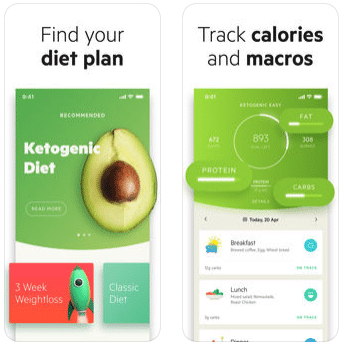
Lifesum is a general health app that has diet plans and recipes, but it also shows your daily macro counts and allows you to set a macro goal. The app is free, but to access macro tracking you’ll have to pay the premium fee.
Macro Diet Gear
Counting macros can sound daunting but the right gear always makes everything easier.
Check out the following macro diet gear to make your experience seamless, and super successful.
Macro Diet Books
When you’re starting a new diet it’s never a bad idea to add some light reading to the docket. Reading the background on a particular diet, like the macro diet, can help you fully understand the history, the parameters, and why it works.
If you’re in it for the weight loss, it can also be inspiring to hear other first hand accounts of something that worked. We’ve added a few of our favorite macro diet books below, and you can also check out this full guide for the best weight loss books to inspire results.
The MacroNutrient Diet
This read gives you the complete DIY guide to losing weight with the macro diet.
The Everything Guide to Macronutrients
This macro nutrient book is a complete guide for the macro diet and includes recipes too.
IIFYM Flexible Dieting Bodybuilding Guide
The IIFYM flexible dieting book talks the macro diet from a bodybuilding approach.
Macro Diet Food Storage Container Set
A food storage container set will help you stay organized, meal plan, and stay on track. We like this clear container set because it’s easy to see what’s in the fridge, and it comes in a variety of sizes so you can maximize fridge space.
Food Scale
A food scale will help keep counting macros easy in the beginning of your macro diet journey. After a while you should get used to common portions and what they’re average weight is, but this will help you get started. We love this food scale because it has a removable bowl option for measuring liquids or foods that are tough to put on a flat surface as well.
Protein Supplements
If you’re struggling to hit your protein macro intake, you may want to consider adding a protein supplement to your diet. This is a cost effective way to hit your percentages without having to force feed yourself chicken all day.
Health Expert
This certainly isn’t a must, but many people recommend meeting with a health expert to consult on your macronutrient diet. They can breakdown the right macro ratio for your exact health makeup and goals. They can also work as a resource when you have questions or get stuck.
The macro diet is a super flexible, individualized, and non-restrictive diet that helps you focus on nutrient-dense food instead of just counting calories. While it may take a little bit more work upfront, if you can really commit to learning the diet and hitting your macros, you can see outstanding health results that help you lead a bigger, better life.
Still not sure? Check out these 6 macrobiotic diet myths explained.
Having trouble seeing the weight loss results you always wanted? Check out the best weight loss books to inspire results, and the ultimate guide to weight loss apps.
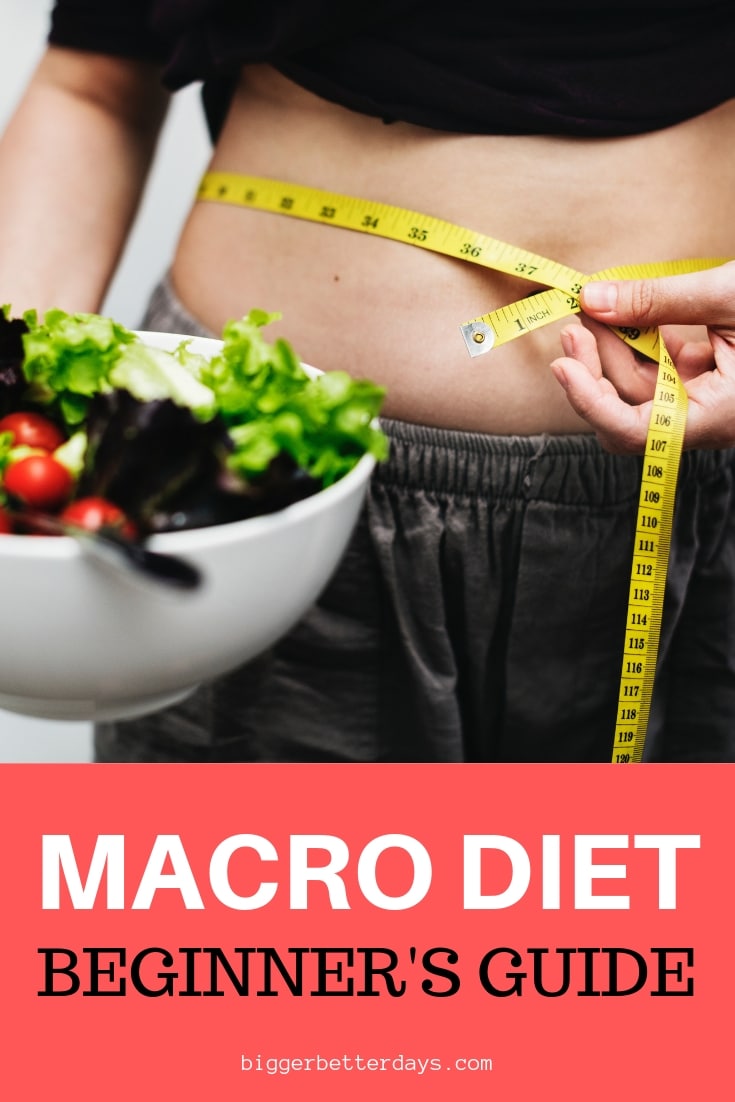

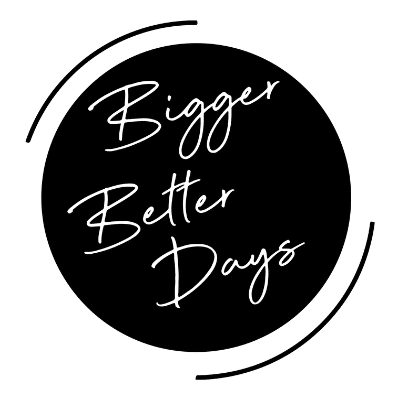






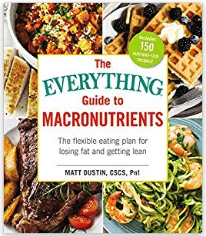

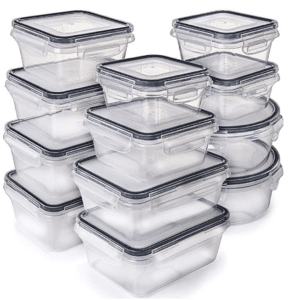
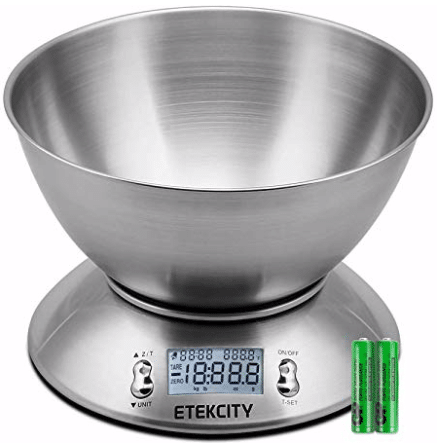
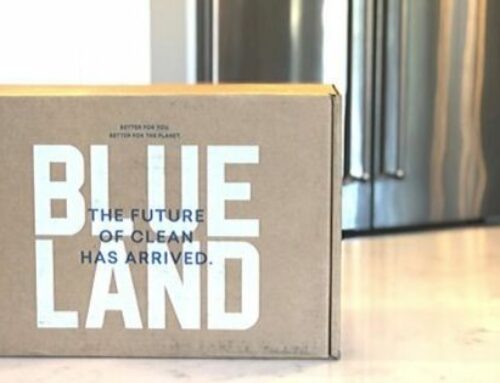




… [Trackback]
[…] Information on that Topic: biggerbetterdays.com/macro-diet-ultimate-beginners-guide/ […]
… [Trackback]
[…] Read More Information here on that Topic: biggerbetterdays.com/macro-diet-ultimate-beginners-guide/ […]
… [Trackback]
[…] There you can find 66091 additional Information on that Topic: biggerbetterdays.com/macro-diet-ultimate-beginners-guide/ […]
… [Trackback]
[…] Read More Info here to that Topic: biggerbetterdays.com/macro-diet-ultimate-beginners-guide/ […]
… [Trackback]
[…] Find More on that Topic: biggerbetterdays.com/macro-diet-ultimate-beginners-guide/ […]
เครดิตฟรีกดรับเองใหม่ล่าสุด เครดิตฟรี50สามารถกดรับได้เลยทันทีผ่านหน้าเว็บไซต์ เครดิตฟรีกดรับเองหน้าเว็บ
PG SLOT เกมส์สล็อตออนไลน์ที่ได้รับความนิยมpg slotที่มีคนเล่นมากที่สุดในปี 2023
pgslot เว็บเดิมพันออนไลน์ ปั่นสล็อต ไปกับpgslot workสล็อต pg เว็บตรง ไม่ผ่านเอเย่นต์
คาสิโนออนไลน์เว็บตรง superslot
เป็นเว็บไซต์ที่กำลังมาแรงที่สุดในการให้บริการเกมส์สล็อตออนไลน์
PGZEED GOLD สัมผัสประสบการณ์สล็อตออนไลน์สุดหรู pgzeedเข้าเล่นเกมส์และชนะใหญ่
เกมใหม่ๆมีโปรโมชั่นพิเศษเครดิตฟรีล่าสุด เพื่อยั่วยวนใจนักเล่นสล็อต
เครดิตฟรี โค้ดเครดิตฟรีกดรับเอง
ประตูสู่โลกแห่งการพนันที่ไม่มีขีดจำกัดบนเว็บ
ฝาก 19รับ100สล็อต ล่าสุด รับได้เลย ตอนนี้
สนุกไปกับสล็อตที่คุณชื่นชอบและเตรียมพร้อมที่จะเป็นผู้ชนะในโลกของpgslotออนไลน์กับ PGSlot Auto ตอนนี้
สล็อตเว็บตรง อันดับ 1jaojeng
จากมุมมองของผู้เล่นที่ชื่นชอบการเล่นเกมออนไลน์
มาพร้อมกับโปรโมชั่นมากมายเครดิตฟรี50ผู้ให้บริการคาสิโนออนไลน์ ครบจบที่เดียว
… [Trackback]
[…] Info to that Topic: biggerbetterdays.com/macro-diet-ultimate-beginners-guide/ […]
… [Trackback]
[…] Here you will find 61153 additional Information to that Topic: biggerbetterdays.com/macro-diet-ultimate-beginners-guide/ […]
เกมสล็อต แจ็คพอต Jackpot แตกง่ายที่สุด pgzeed ประสบการณ์ใหม่ ไม่ต้องทำรายการผ่านพนักงาน ทำรายการ ด้วยตนเอง
you are really a good webmaster. The site loading speed is amazing. It seems that you’re doing any unique trick. Furthermore, The contents are masterpiece. you have done a wonderful job on this topic!
… [Trackback]
[…] Read More on on that Topic: biggerbetterdays.com/macro-diet-ultimate-beginners-guide/ […]
Hello, I thoroughly enjoyed reading your informative and inspiring piece. Your profound insights into this topic truly provide a better understanding of its complexity. I agree with the points you raised, especially when you delved into the specifics of the article. In my opinion, that aspect is often overlooked and deserves further attention. I would also like to add that my personal experiences so far align with the ideas you expressed. Additionally, I appreciate the way you present information clearly and concisely, making it easily understandable for readers from various backgrounds. I hope your future writings remain consistent in offering such deep insights. Thank you for your dedication to sharing knowledge and thoughts. May you continue to contribute positively through your writings. I hope you can also read my writing related to health, and I hope my writing can also add insight to all of us.
… [Trackback]
[…] Read More to that Topic: biggerbetterdays.com/macro-diet-ultimate-beginners-guide/ […]
ใครอยากสัมผัสสล็อตระบบใหม่ ที่ทันสมัยตอบสนองรวดเร็ว เลือกเล่นกับเรา ฝาก ฝาก9รับ100 เล่นสมัครยูสเดียวสนุกได้อย่างอันลิมิต เล่นได้ตลอดชีวิตไม่ต้องสมัครเพิ่ม
เกมสล็อตเล่นได้มากกว่า 200 เกม รองรับทั้งระบบ IOS และ ANDROID n83 เครดิตฟรี 188 ให้บริการด้วยระบบ AUTO ที่มีความเสถียร มีความแม่นยำ ปลอดภัย 100%
ระบบออโต้ เสร็จเร็ว ไม่เกิน 1 นาที สมัครยูสเดียวสนุกไม่รู้จบ pgslot6g เดิมพันสล็อตออนไลน์ครบวงจร สนุกกับเกมดังทำเงินได้จริง ไม่ต้องลงทุนเยอะ เล่นได้จ่ายจริง
สมัครสล็อตpg สิทธิพิเศษไม่อั้น สล็อตเครดิตฟรีแค่สมัคร pg slot เว็บตรง อันดับ 1 สมัครผ่านเว็บไซต์ง่ายในไม่กี่ขั้นตอน ก็สนุกกับเกมมากกว่า 200 เกมได้ทันที สมัครวันนี้รับโบนัสฟรี 100%
เกมสล็อตpg ให้เลือกเล่นมากมาย ลงเกมใหม่อัปเดตไวที่สุด <a href=" zeed456” rel=”dofollow”>20รับ100 บริการด้วยความเป็นมืออาชีพ พร้อมให้บริการช่วยเหลือตลอด 24 ชั่วโมง
… [Trackback]
[…] Info to that Topic: biggerbetterdays.com/macro-diet-ultimate-beginners-guide/ […]
I like the valuable information you provide in your articles. I will bookmark your blog and check again here regularly. I am quite sure I will learn plenty of new stuff right here! Best of luck for the next!
เว็บตรง สล็อต ฝากถอน true wallet เว็บตรง 888pg ที่ได้รับความนิยมมากที่สุด
Hi, I think your blog might be having browser compatibility issues. When I look at your website in Opera, it looks fine but when opening in Internet Explorer, it has some overlapping. I just wanted to give you a quick heads up! Other then that, excellent blog!
Kağıthane’de Yeni Açılan Modern Sanat Galerisi.
Gözlerinizi Boğaziçi Köprüsü’nden Görünen Muhteşem Manzaraya Dikin.
İstanbul Üniversitesi Bahçesi’nde Sessiz Bir Okuma Keyfi.
Küçükçekmece’de Yeni Açılan Gençler İçin Kütüphane ve Okuma Salonları.
Thank you, I have recently been searching for info about this topic for ages and yours is the greatest I’ve discovered till now. But, what about the conclusion? Are you sure about the source?
pg slot, mother website, big website, easy to deposit, withdraw, trust 99.99% for sure. Visit our website. slotgxy888 สล็อต เว็บตรง
pg slot I really like your forum. There is also an imcvcvportant story in case you don’t want to miss can apply at slotgxy888สล็อตPG888
This is spot on. Keep up the good work! illplaywithyou
Gdy podejrzewamy, że nasza żona lub mąż zdradził małżeństwo, ale nie ma na to bezpośrednich dowodów lub chcemy się martwić o bezpieczeństwo naszych dzieci, dobrym rozwiązaniem jest również monitorowanie ich telefonów komórkowych, które zazwyczaj pozwala na uzyskanie ważniejszych informacji.
I love your writing style truly loving this site.
เว็บพนันบอล เว็บพนันบอล เว็บพนันบอลออนไลน์ บอลเดี่ยว สเต็ปบอล บอลผสม เดิมพันกีฬาทุกประเภท เล่นคาสิโนออนไลน์ หลากหลายเกมคาสิโนยอดนิยม สนใจคลิกลิงค์ ufabet แทงบอลออนไลน์
เครดิตฟรี UFABET เป็นทางเลือกที่เหมาะสมที่สุดสำหรับนักพนัน การพนันฟุตบอลเป็นการพนันที่สร้างรายได้และความตื่นเต้นให้กับผู้เล่นอีกด้วย แต่การเลือกเว็บไซต์ที่ใช้แทงบอลดีนั้นเลือกได้ยาก เพราะผลตอบแทนจากการแทงบอลบางครั้งมีมูลค่าที่สูงมาก ซึ่งเป็นเว็บพนันบอลออนไลน์ที่ได้รับความนิยมมากที่สุดและติดอันดับ 1 ของประเทศไทยในปัจจุบัน ufavip
The safest source of casinos and slot games. Apply now at ufavvip789. Click เว็บตรง UFABET
Thanks a lot for providing individuals with an extraordinarily remarkable opportunity to read articles and blog posts from here. It is always very cool plus full of fun for me and my office fellow workers to search your blog no less than thrice per week to read the latest things you have. Of course, I am just actually fulfilled with the amazing solutions you give. Certain 1 points on this page are without a doubt the finest we’ve had.
Thank you for any other informative website. The place else may I am getting that kind of information written in such an ideal manner? I’ve a venture that I’m simply now operating on, and I have been on the glance out for such info.
You have a real talent for this field. hot nude cams
Thank you for any other excellent post. The place else may anybody get that type of info in such a perfect approach of writing? I’ve a presentation next week, and I am on the look for such information.
Hey There. I found your blog the use of msn. This is an extremely well written article. I’ll be sure to bookmark it and come back to learn extra of your helpful info. Thanks for the post. I will definitely return.
Fitspresso stands out among the crowded health supplement market as an exceptional product.
You completed various fine points there. I did a search on the matter and found a good number of persons will have the same opinion with your blog.
You have a gift for making things stick. Adult Web Cams
Hello, you used to write magnificent, but the last few posts have been kinda boring… I miss your tremendous writings. Past several posts are just a little bit out of track! come on!
I?¦m no longer sure where you’re getting your info, however great topic. I needs to spend a while finding out more or figuring out more. Thanks for excellent information I was looking for this information for my mission.
สเต็ปบอล บอลผสม เดิมพันกีฬาทุกประเภท เล่นคาสิโนออนไลน์ หลากหลายเกมคาสิโนยอดนิยม สนใจคลิกลิงค์ ufabet แทงบอลออนไลน์
Nationally leading online gambling website Collection of both Thai and foreign slot websites. All in one place. แทงบอลออนไลน์
Hey just wanted to give you a brief heads up and let you know a few of the pictures aren’t loading correctly. I’m not sure why but I think its a linking issue. I’ve tried it in two different web browsers and both show the same results.
What Is Potent Stream? Potent Stream is a male health formula that helps to maintain healthy urinary and prostate health by killing off all the toxins in the body
Once I originally commented I clicked the -Notify me when new feedback are added- checkbox and now each time a remark is added I get four emails with the identical comment. Is there any manner you’ll be able to take away me from that service? Thanks!
Ikaria Lean Belly Juice is a dietary supplement that helps in losing weight.
This is very interesting, You are an excessively professional blogger. I have joined your feed and look forward to looking for more of your magnificent post. Additionally, I’ve shared your web site in my social networks!
I have been absent for some time, but now I remember why I used to love this blog. Thanks, I will try and check back more frequently. How frequently you update your web site?
Hola! I’ve been reading your weblog for some time now and finally got the courage to go ahead and give you a shout out from Porter Tx! Just wanted to tell you keep up the excellent work!
There is apparently a lot to identify about this. I think you made various good points in features also.
You got a very good website, Gladiola I found it through yahoo.
As I site possessor I believe the content matter here is rattling fantastic , appreciate it for your efforts. You should keep it up forever! Best of luck.
I in addition to my buddies have already been following the excellent secrets and techniques located on your site and so immediately developed an awful feeling I had not thanked you for them. My ladies are actually as a consequence excited to study all of them and now have actually been making the most of them. I appreciate you for genuinely simply accommodating and also for finding such ideal useful guides millions of individuals are really desirous to be aware of. Our own honest regret for not expressing gratitude to you earlier.
Great website. Plenty of useful information here. I’m sending it to some friends ans also sharing in delicious. And naturally, thanks for your effort!
What is Java Burn? Java Burn, an innovative weight loss supplement, is poised to transform our perception of fat loss.
Woh I love your posts, saved to favorites! .
I conceive this web site has got some really superb info for everyone :D. “Believe those who are seeking the truth doubt those who find it.” by Andre Gide.
I rattling pleased to find this website on bing, just what I was looking for : D likewise saved to fav.
Nationally leading online gagmblin website Collection of both Thai and foreign slot websites. All in one place. แทงบอลออนไลน์
ufavvip789 Number 1 direct casino website, not through agents with the most people applying. ufavvip789
Excellent website. A lot of helpful information here. I am sending it to a few buddies ans additionally sharing in delicious. And certainly, thank you in your sweat!
Online football betting website direct website ufavvip789.vip เว็บแทงบอลออนไลน์ ไม่ผ่านเอเย่นต์ Online football betting step football single football water and paid commission up to 100000 per week
Hey there! I know this is kind of off topic but I was wondering if you knew where I could locate a captcha plugin for my comment form? I’m using the same blog platform as yours and I’m having trouble finding one? Thanks a lot!
What i don’t realize is actually how you are not actually much more well-liked than you may be right now. You’re so intelligent. You realize therefore significantly relating to this subject, produced me personally consider it from a lot of varied angles. Its like men and women aren’t fascinated unless it’s one thing to do with Lady gaga! Your own stuffs great. Always maintain it up!
There are certainly lots of particulars like that to take into consideration. That is a nice point to convey up. I provide the thoughts above as common inspiration but clearly there are questions like the one you convey up the place the most important factor might be working in honest good faith. I don?t know if finest practices have emerged around things like that, but I’m positive that your job is clearly recognized as a fair game. Both girls and boys really feel the impression of only a moment’s pleasure, for the remainder of their lives.
I really like your writing style, superb info , regards for posting : D.
I’m not sure the place you are getting your information, however great topic. I must spend some time learning more or working out more. Thanks for excellent information I was searching for this information for my mission.
What is Zen Cortex? ZenCortex is not just another drop in the ocean of dietary supplements; it’s a formulated concoction designed with a clear aim: to enhance auditory health and cognitive functions.
Some genuinely nice and utilitarian info on this website , likewise I think the design and style has got good features.
I have been surfing online greater than three hours today, yet I never discovered any fascinating article like yours. It?¦s lovely price enough for me. In my view, if all web owners and bloggers made excellent content material as you probably did, the web can be a lot more helpful than ever before.
Wow, fantastic blog structure! How long have you ever been blogging for? you made blogging glance easy. The full glance of your web site is fantastic, let alone the content material!
I was more than happy to seek out this web-site.I wanted to thanks to your time for this wonderful learn!! I positively having fun with each little bit of it and I’ve you bookmarked to check out new stuff you weblog post.
What Is FitSpresso? The effective weight management formula FitSpresso is designed to inherently support weight loss. It is made using a synergistic blend of ingredients chosen especially for their metabolism-boosting and fat-burning features.
Hello my friend! I want to say that this article is awesome, nice written and include almost all important infos. I would like to see more posts like this.
Whats up are using WordPress for your blog platform? I’m new to the blog world but I’m trying to get started and create my own. Do you require any coding knowledge to make your own blog? Any help would be greatly appreciated!
Hello, i think that i saw you visited my website so i came to “return the favor”.I am attempting to find things to improve my site!I suppose its ok to use a few of your ideas!!
I truly enjoy examining on this website , it holds excellent articles.
Hi my friend! I wish to say that this post is awesome, nice written and include almost all important infos. I would like to look extra posts like this .
This web site is really a walk-through for all of the info you wanted about this and didn’t know who to ask. Glimpse here, and you’ll definitely discover it.
Its fantastic as your other posts : D, appreciate it for posting. “Say not, ‘I have found the truth,’ but rather, ‘I have found a truth.'” by Kahlil Gibran.
Some truly prize articles on this internet site, saved to favorites.
Attractive section of content. I just stumbled upon your website and in accession capital to assert that I get in fact enjoyed account your blog posts. Any way I will be subscribing to your feeds and even I achievement you access consistently quickly.
I¦ll right away clutch your rss feed as I can’t to find your e-mail subscription hyperlink or newsletter service. Do you’ve any? Kindly allow me recognize in order that I could subscribe. Thanks.
Nice blog here! Also your site loads up fast! What web host are you using? Can I get your affiliate link to your host? I wish my site loaded up as quickly as yours lol
I really appreciate this post. I have been looking everywhere for this! Thank goodness I found it on Bing. You’ve made my day! Thanks again
สล็อตทรูวอลเล็ต Deposit and withdrawal, no minimum The first time I played it, it broke well. If you are interested in playing slots that deposit and withdraw quickly without having to wait long. This website has the best advantages in terms of financial transactions.
._. สล็อตwallet There is no minimum.Registered correctly Playing with a high safety rate High win rate, every game is easy tobreak and make a lot ofprofits.
สล็อตเครดิตฟรี สล็อตเครดิตฟรี สล็อตเครดิตฟรี แจกฟรี สล็อตเครดิตฟรี There is a chance to win and receive prizes. Therefore, choosing to use here has the highest chance of winning40003
สล็อตฝากถอน true wallet 577482 Direct website, that’s it, you have a chance to win big prizes. The minimum starting bet starts at 1 baht and you can win.
[url]=https://www.fideg.xyz/]สล็อตวอเลท[/url] Slot Wallet, a direct website with fast transactions, makes us the number 1 slot website with the most modern deposit system.
http://www.fideg.xyz สล็อตเว็บตรง Number 1 direct website slots no agents, no middlemen
Thanks for another great article. Where else could anyone get that kind of information in such an ideal way of writing? I’ve a presentation next week, and I’m on the look for such info.
I have recently started a blog, the info you provide on this site has helped me greatly. Thank you for all of your time & work.
Reading it is tough, but in the anime this shit will look majestic
Pretty nice post. I just stumbled upon your weblog and wished to say that I have truly enjoyed surfing around your blog posts. After all I will be subscribing to your rss feed and I hope you write again soon!
I was just looking for this information for a while. After 6 hours of continuous Googleing, finally I got it in your website. I wonder what is the lack of Google strategy that don’t rank this type of informative websites in top of the list. Generally the top web sites are full of garbage.
I’ve been exploring for a little bit for any high quality articles or blog posts on this kind of area . Exploring in Yahoo I at last stumbled upon this site. Reading this info So i am happy to convey that I have a very good uncanny feeling I discovered exactly what I needed. I most certainly will make certain to do not forget this website and give it a look on a constant basis.
Have you ever considered about adding a little bit more than just your articles? I mean, what you say is important and all. However just imagine if you added some great graphics or videos to give your posts more, “pop”! Your content is excellent but with pics and clips, this blog could definitely be one of the greatest in its niche. Wonderful blog!
A lot of of the things you assert is supprisingly legitimate and that makes me wonder the reason why I had not looked at this in this light previously. This particular piece really did switch the light on for me personally as far as this particular subject goes. Nevertheless at this time there is one issue I am not too comfy with so while I attempt to reconcile that with the actual main idea of the position, allow me see just what the rest of your visitors have to say.Very well done.
I genuinely enjoy looking at on this website , it has got great content.
Helpful info. Lucky me I discovered your website unintentionally, and I’m shocked why this twist of fate did not happened earlier! I bookmarked it.
hi!,I like your writing very a lot! percentage we communicate more about your post on AOL? I require a specialist in this space to solve my problem. May be that’s you! Having a look forward to see you.
Excellent read, I just passed this onto a friend who was doing a little research on that. And he actually bought me lunch as I found it for him smile So let me rephrase that: Thank you for lunch! “Do you want my one-word secret of happiness–it’s growth–mental, financial, you name it.” by Harold S. Geneen.
I conceive other website proprietors should take this site as an model, very clean and good user pleasant design and style.
You really make it appear so easy along with your presentation however I to find this matter to be really something that I feel I’d by no means understand. It sort of feels too complex and very broad for me. I am taking a look ahead to your next put up, I¦ll attempt to get the hold of it!
You made some decent points there. I looked on the internet for the problem and located most people will go together with with your website.
What i do not understood is in truth how you are not actually much more well-appreciated than you might be right now. You are very intelligent. You recognize thus significantly on the subject of this subject, made me personally imagine it from so many various angles. Its like women and men don’t seem to be involved until it?¦s something to do with Woman gaga! Your own stuffs outstanding. All the time deal with it up!
Deference to article author, some excellent selective information.
เมื่อคุณเข้าร่วมกับ THE88THAI คุณจะพบว่าสล็อตโปรโมชั่นของเรานั้นถูกออกแบบมาเพื่อให้คุณสามารถเล่นเกมสล็อตได้อย่างสนุกสนานและคุ้มค่า พร้อมกับโอกาสในการเพิ่มเงินรางวัลที่มากมาย ด้วยโปรโมชั่นที่เน้นความหลากหลาย ไม่ว่าคุณจะเป็นผู้เล่นใหม่หรือผู้เล่นเก่า คุณก็สามารถรับสิทธิประโยชน์มากมายจากสล็อตโปรโมชั่นของเรา ที่ the88me เรามุ่งมั่นในการมอบโปรโมชั่นที่ดีที่สุดให้กับผู้เล่นทุกคน เพื่อให้การเล่นสล็อตของคุณมีความพิเศษและมีความหมายมากยิ่งขึ้น
You could certainly see your enthusiasm within the work you write. The world hopes for more passionate writers such as you who aren’t afraid to say how they believe. At all times go after your heart. “We are near waking when we dream we are dreaming.” by Friedrich von Hardenberg Novalis.
I was reading some of your posts on this internet site and I think this website is really instructive! Continue posting.
Usually I do not read post on blogs, but I would like to say that this write-up very forced me to try and do it! Your writing style has been surprised me. Thanks, quite nice article.
Great – I should definitely pronounce, impressed with your website. I had no trouble navigating through all tabs as well as related info ended up being truly simple to do to access. I recently found what I hoped for before you know it in the least. Reasonably unusual. Is likely to appreciate it for those who add forums or something, web site theme . a tones way for your client to communicate. Excellent task.
เบื่อแล้วกับการหาเกมส์เล่นที่ไหนก็ไม่เจอเกมส์ถูกใจ? มาลองเล่นกับ https://www.wy88thailand.com/ wy88 สิครับ เราคัดสรร เกมเดิมพัน ที่ดีที่สุดมาให้คุณได้เลือกเล่นมากกว่าที่ไหนๆ พร้อมระบบ ฝากถอน ทรูวอลเลต ที่สะดวกสบาย
PG online slots website 2024 free registration free credit to play online slots Free registration given http://www.slotgxy888.net SLOTGXY888
SLOT PG get real money n all forms From foreign websites, foreign countries, including all the camps that make slots the easiest to crack, all in one website. SLOTGXY888 555 Apply for membership
SLOTGXY888 เว็บตรง New that is beautifully designed and exciting special effects Featured games from PGSLOT offer easy wins 9885 SLOTGXY888
000 แทงบอลออนไลน์ UFA VVIP789 must be the first direct website that you should consider. With unique confidence With the most stable system
Hi! I just want to offer you a big thumbs up for your great information you have got right here on this
post. I am coming back to your blog for more soon.
I carry on listening to the news update talk about receiving free online grant applications so I have been looking around for the top site to get one. Could you tell me please, where could i find some?
wy88 เครดิตฟรีล่าสุดได้จริง เว็บพนันออนไลน์อันดับ 1 มอบโอกาสให้คุณได้สัมผัสประสบการณ์การเล่นเกมคาสิโนออนไลน์ที่ดีที่สุด ด้วยโปรโมชั่น เครดิตฟรี ที่แจกให้สมาชิกใหม่ทุกคนได้อย่างต่อเนื่อง ไม่ต้องฝาก ไม่ต้องแชร์ เพียงแค่สมัครสมาชิก ก็รับไปเลยเครดิตฟรี นำไปเล่นเกมสล็อตสุดฮิตได้ทุกเกม
สล็อตทรูวอลเล็ต ฝากถอนไม่มีขั้นต่ำ เล่นครั้งแรกแตกดี ถ้าสนใจการเล่นสล็อตที่ฝาก-ถอนรวดเร็วทันใจแบบไม่ต้องรอนาน เว็บนี้มีข้อดีในด้านการทำธุรกรรมการเงินดีที่สุด
999Apply for membership สล็อตวอเลท Slot Wallet, a direct website with fast transactions, makes us the number 1 slot website with the most modern deposit system.
Thank you for the auspicious writeup. It in fact was a amusement account it.
Look advanced to more added agreeable from you! However, how
can we communicate?
It’s the best time to make some plans for the future and it’s time to be happy.
I’ve learn this submit and if I may I desire to suggest you some attention-grabbing things
or suggestions. Maybe you could write subsequent articles relating to this article.
I desire to learn even more issues about it!
Thanks for sharing. I read many of your blog posts, cool, your blog is very good.
ยูฟ่าเบท Wallet ยังมีระบบการเงินที่ปลอดภัยและมีประสิทธิภาพ ทำให้การฝากและถอนเงินเป็นเรื่องง่ายและรวดเร็ว นอกจากนี้ UFAWALLET777 ยังมีโปรโมชั่นและโบนัสที่มีมูลค่าสูง เพื่อเสริมประสบการณ์การพนันที่ดีที่สุดให้กับผู้เล่นทั่วโลก
789UFABET Auto Wallet has made our reputation at the top of online gaming by prioritizing the needs and experiences of our members.
ufawallet777.club UFABet True Wallet Play and get prize money for sure Special bonus credits given out every day Meet the needs of players of all levels with VIP service 24 hours a day
สล็อตออนไลน์ ฟรี ได้ที่เว็บเรา ก่อนที่จะลงเดิมพันจริง เพื่อทำความคุ้นเคยกับเกมและรูปแบบการออกรางวัล ซุปเปอร์ สล็อต ในแต่ละเกมส์ เพื่อเป็นตัวเลือกในการปั่นสล็อตเงินจริง
999Apply for membership GXY789 It’s an online slots website. That is becoming the most popular, direct website slots, number 1, licensed slot website, direct website, genuine API from abroad. Received a license to operate an online casino Absolutely safe
http://www.gxy789.com สล็อตpg If you are interested in playing that is second to none Complete with modern playing features and consistent payout online slots applying and using here is the answer that is extremely worthwhile SPIN breaks heavily and provides every amounts
Apply for membership สล็อตแตกหนัก 3256 It will make you feel more fun and interesting by providing services will be one of the websites that creates fun and excitement for you Not only that, it is also a website that can generate income for you. Our website is 100% reliable and trustworthy.
Howdy! This article could not be writrten much better!
Reading through this post reminds me of myy previous roommate!
He always kept talking about this. I most certainly will forward this article to him.
Fairly certtain he will hhave a good read.
I ppreciate you for sharing!
Hello, i feesl thawt i noticed you visited my weblog so i caje too return the prefer?.I’m attempting too in finding things to enbance my website!I guess its ok to use a ffew of your concepts!!
Thanks for sharing excellent informations. Your site is so cool. I’m impressed by the details that you have on this website. It reveals how nicely you understand this subject. Bookmarked this web page, will come back for extra articles. You, my pal, ROCK! I found just the information I already searched all over the place and simply could not come across. What a great web-site.
cabal red พาคุณเข้าสู่โลกแฟนตาซีที่เต็มไปด้วยปริศนาและความท้าทาย คุณจะได้สัมผัสการต่อสู้ที่รวดเร็ว เร้าใจ และเข้มข้นไปกับระบบ PvP สุดเร้าใจ สร้างสกิลที่เหมาะกับสไตล์การเล่นของคุณ และรวบรวมเพื่อนร่วมทีมเพื่อปกป้องดินแดนจากศัตรูที่มาโจมตี เตรียมตัวให้พร้อมสำหรับการต่อสู้ที่คุณไม่เคยพบเจอมาก่อน
Amazing! This blog looks just like my old one! It’s on a completely different subject but it has pretty much the same page layout and design. Outstanding choice of colors!
http://www.gxy789.com สล็อตpg If you are interested in playing that is second to none Complete with modern playing features and consistent payout online slots applying and using here is the answer that is extremely worthwhile SPIN breaks heavily and provides every amounts
Your point of view caught my eye and was very interesting. Thanks. I have a question for you.
mexican pharmaceuticals online https://mexicanpharmgate.com/ mexican online pharmacies prescription drugs
buying prescription drugs in mexico Mexican Pharm Gate п»їbest mexican online pharmacies
medicine in mexico pharmacies